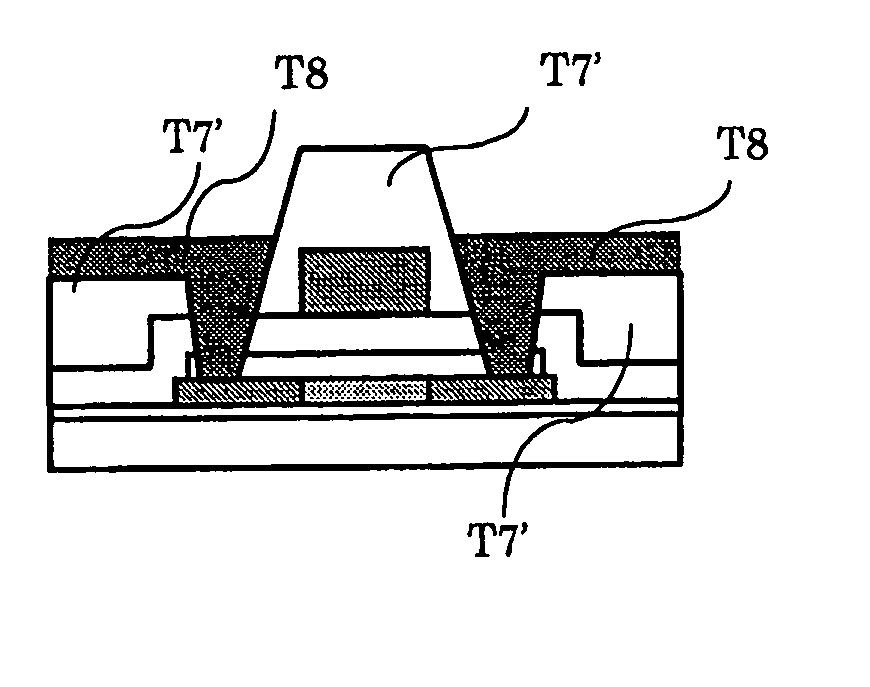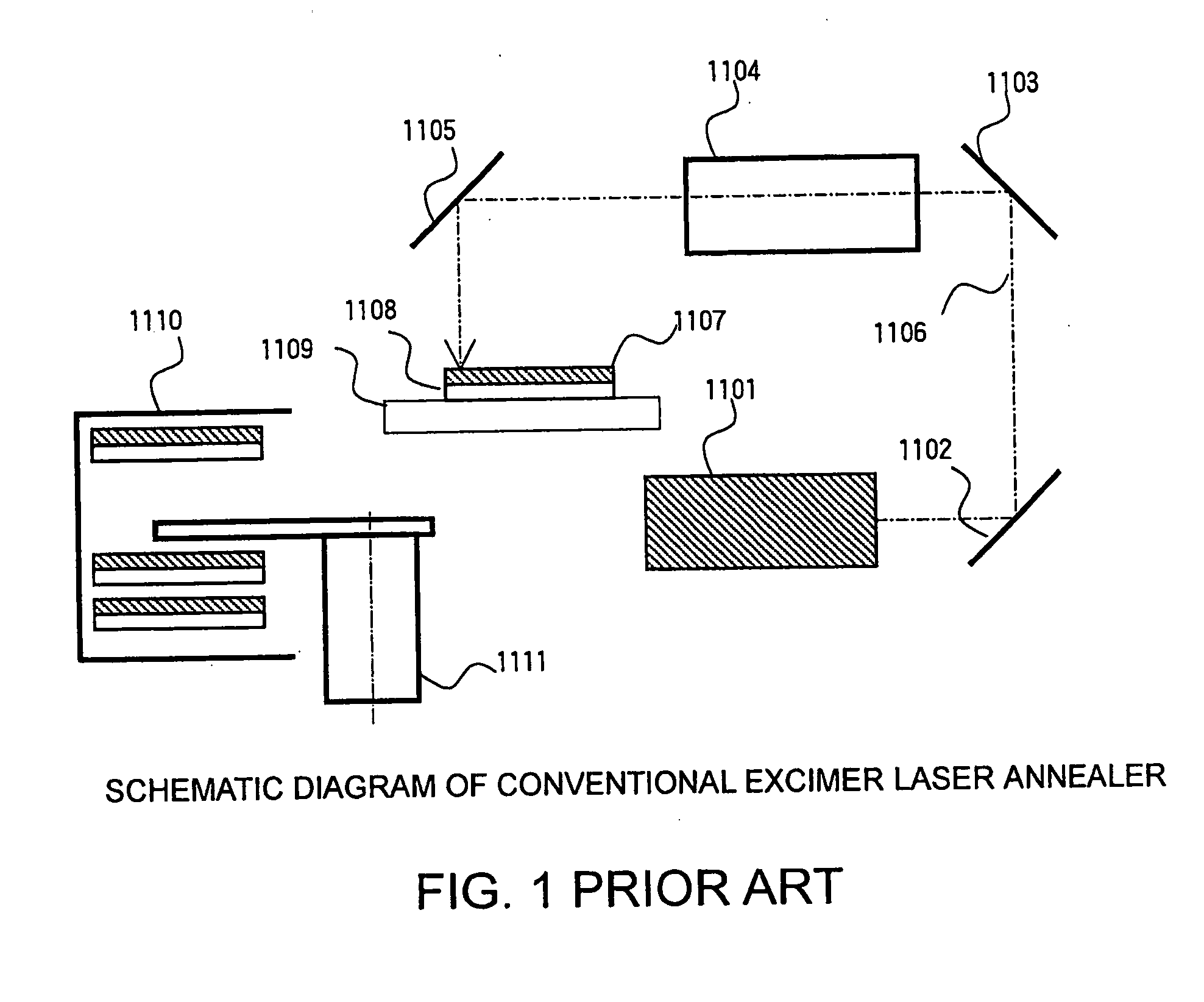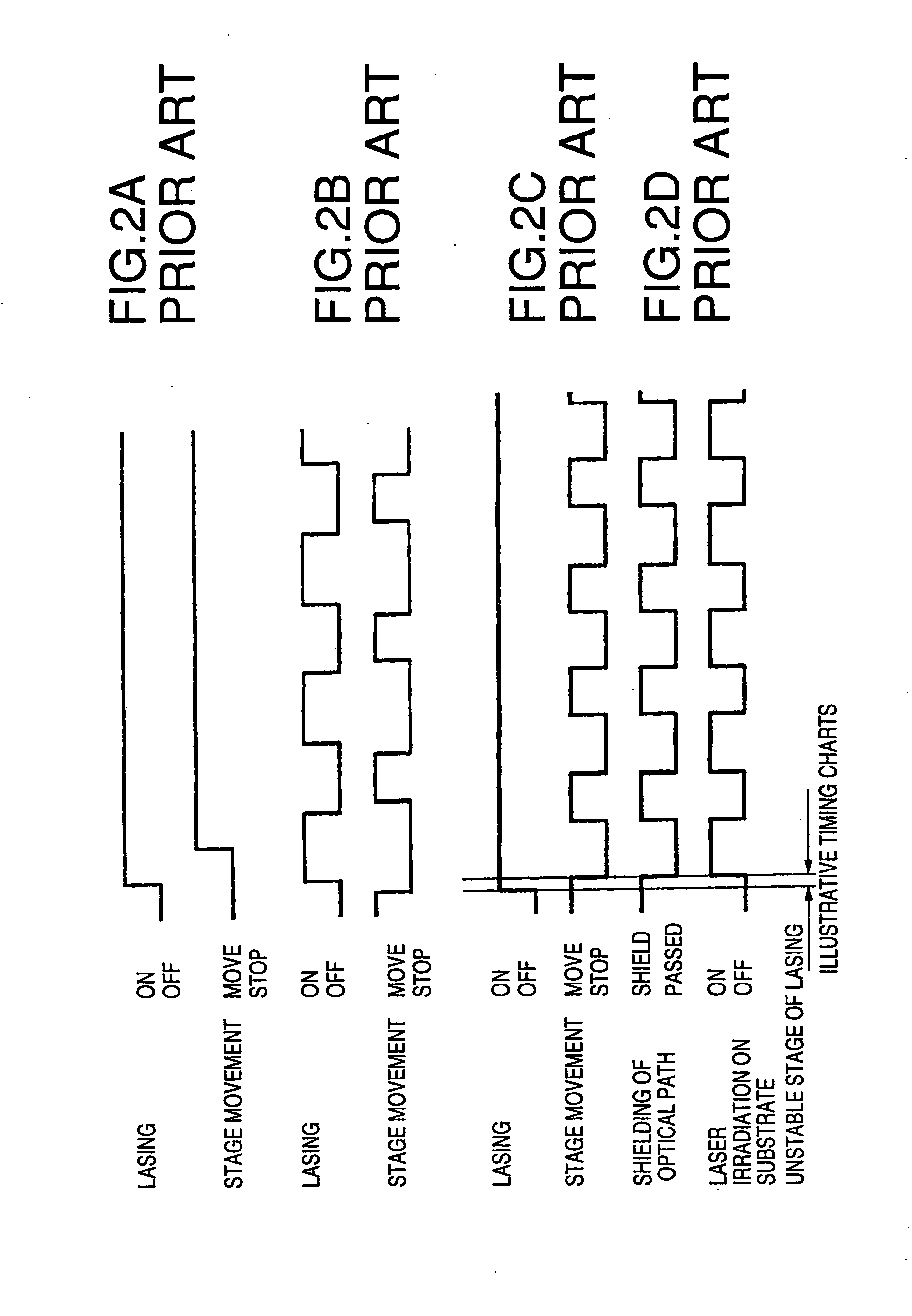Semiconductor thin film forming system
a technology of thin film and semiconductor, applied in the direction of vacuum evaporation coating, manufacturing tools, coatings, etc., can solve the problems of inability to achieve satisfactory uniform characteristics of polycrystalline silicon thin film transistor, and the inability to significantly reduce the connection pitch of the tab connection method or wire bonding method, etc., to achieve satisfactory semiconductor-insulating film interface and reduce plasma damage
- Summary
- Abstract
- Description
- Claims
- Application Information
AI Technical Summary
Benefits of technology
Problems solved by technology
Method used
Image
Examples
first embodiment
[0204] Next, the CVD system according to the invention will be illustrated with reference to FIGS. 36 and 37. In the CVD system shown in FIG. 36, a silicon oxide film as a gate insulating film is formed on a conventional TFT glass substrate 7111, using, preferably, silane as a material gas. A casing 7112 of the CVD system is a vacuum casing, and the inside of the casing is maintained at a desired degree of vacuum during film forming operation by action of an evacuating mechanism 7113. The evacuating mechanism 7113 is connected to an evacuating port 7112b-1 formed in the vacuum casing 7112.
[0205] The vacuum casing 7112 houses a partition 7114 at the midpoint in a vertical direction. The partition 7114 is composed of a conductive material and is arranged in a nearly horizontal position, and has, for example, a square plane shape. The periphery of the partition 7114 is in contact with a peripheral wall of the vacuum casing 7112. The partition 7114 serves to separate the inside of the v...
second embodiment
[0247] the surface of the substrate 8109 is modified by supplying a modifier after the annealing process. This configuration plays a very important role to improve the operating characteristics of the resulting TFT. A polysilicon film formed by crystallizing an amorphous silicon film in the annealing process has unbonded ends of silicon (dangling bonds) on its surface. If the atmosphere contains oxygen or other gases reactive with silicon during movement of the substrate 8109 from an annealing chamber (not shown) to the film forming chamber 8101, such a reactive gas readily reacts with the dangling bonds of silicon to form a contaminated region on the surface of the polysilicon film. If such a contaminated region is formed at an interface between the polysilicon film and the gate insulating film, the resulting TFT cannot have a stoichiometric composition. This is liable to cause defective levels and other problems that deteriorate the operating characteristics of the TFT.
[0248] The...
PUM
| Property | Measurement | Unit |
|---|---|---|
| temperature | aaaaa | aaaaa |
| temperatures | aaaaa | aaaaa |
| size | aaaaa | aaaaa |
Abstract
Description
Claims
Application Information
 Login to View More
Login to View More - R&D
- Intellectual Property
- Life Sciences
- Materials
- Tech Scout
- Unparalleled Data Quality
- Higher Quality Content
- 60% Fewer Hallucinations
Browse by: Latest US Patents, China's latest patents, Technical Efficacy Thesaurus, Application Domain, Technology Topic, Popular Technical Reports.
© 2025 PatSnap. All rights reserved.Legal|Privacy policy|Modern Slavery Act Transparency Statement|Sitemap|About US| Contact US: help@patsnap.com



